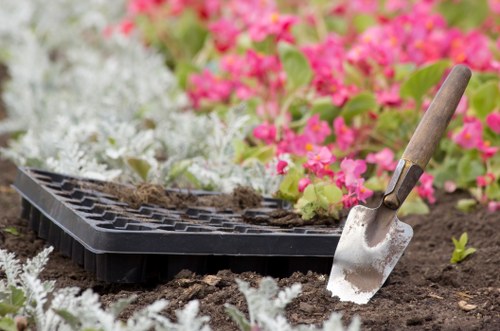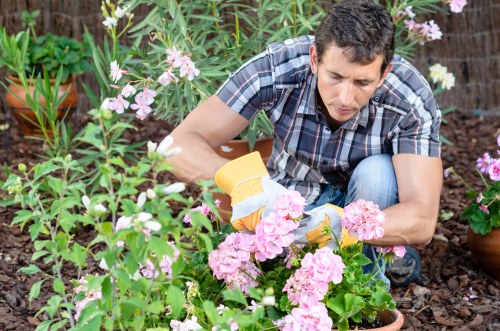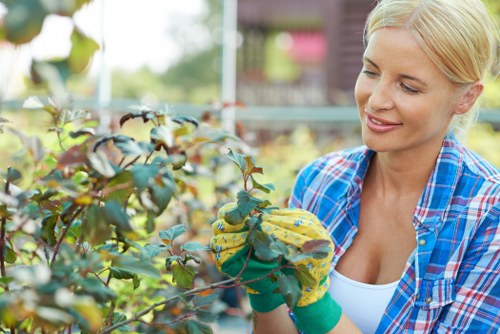Comprehensive Guide to Garden Clearance for Landscape Gardeners

Understanding Garden Clearance
Garden clearance is a fundamental aspect of landscape gardening. It involves the removal of old plants, debris, and unwanted materials to create a clean slate for new landscaping projects. Effective garden clearance ensures a healthy environment for plants to thrive and enhances the overall aesthetics of your outdoor space.
For gardeners, clearing the garden is not just about tidying up; it’s about preparing the soil, promoting better air circulation, and reducing the risk of pests and diseases. A well-cleared garden sets the foundation for successful planting and sustainable garden maintenance.
Whether you're looking to redesign your garden, plant new species, or simply maintain existing flora, understanding the nuances of garden clearance is essential. This guide delves into the best practices, tools, and tips to help you achieve a pristine garden ready for any landscaping endeavor.

Why Garden Clearance is Essential
Maintaining a healthy garden involves regular clearance. Here are key reasons why garden clearance is essential:
- Prevents Overcrowding: Removing excess plants prevents overcrowding, allowing each plant ample space to grow.
- Reduces Disease: Clearing dead or diseased plants minimizes the spread of infections.
- Improves Aesthetics: A well-maintained garden looks more appealing and inviting.
- Enhances Soil Health: Removing debris enriches the soil, promoting healthier plant growth.
Regular garden clearance is a proactive approach to garden management, ensuring that your outdoor space remains beautiful and functional throughout the year.
Implementing a clearance routine can drastically improve the longevity and vibrancy of your garden. It’s a small investment of time that yields significant rewards in the health and appearance of your landscape.

Steps for Effective Garden Clearance
1. Assessment and Planning
Before starting the clearance process, assess your garden to identify areas that need attention. Plan your approach based on the type and extent of clearance required.
Identify Problem Areas
Look for overgrown sections, dead plants, and areas with poor soil quality. Prioritize these areas for immediate attention.
Set Clear Goals
Determine what you aim to achieve—whether it’s preparing for new plants or simply maintaining the current garden state. Clear goals will guide your clearance efforts effectively.

Tools and Equipment for Garden Clearance
Equipping yourself with the right tools can make garden clearance more efficient and less labor-intensive. Here are essential tools every gardener should have:
- Pruning Shears: Ideal for trimming and shaping plants.
- Garden Forks: Useful for turning and aerating the soil.
- Rakes: Essential for gathering debris and leveling the soil.
- Wheelbarrows: Handy for transporting heavy materials and waste.
- Gloves and Protective Gear: Protect your hands and body while working.
Investing in quality tools not only improves efficiency but also enhances the safety and comfort of your garden clearance tasks.
Regular maintenance of your tools ensures they remain effective and safe to use, prolonging their lifespan and saving you money in the long run.

Best Practices for Garden Clearance
Adhering to best practices ensures that garden clearance is done thoroughly and sustainably:
- Seasonal Clearance: Perform clearance at appropriate times of the year to align with plant growth cycles.
- Selective Removal: Focus on removing only the necessary plants and debris to preserve garden health.
- Dispose Responsibly: Compost organic waste and recycle materials when possible to minimize environmental impact.
- Maintain Soil Quality: After clearing, enrich the soil with fertilizers or organic matter to support new growth.
- Regular Maintenance: Incorporate garden clearance into your regular maintenance routine to prevent overgrowth.
Implementing these best practices promotes a healthy, vibrant garden that can withstand environmental stresses and continue to flourish.
Consistent and mindful garden clearance contributes to the long-term sustainability and beauty of your landscape, making it a rewarding aspect of gardening.
Common Challenges in Garden Clearance
Despite its benefits, garden clearance can present several challenges:
- Weed Infestation: Persistent weeds can make clearance tasks more time-consuming.
- Heavy Debris: Large branches and dense plant matter require more effort to remove.
- Lack of Time: Busy schedules can make regular garden clearance difficult.
- Physical Strain: Clearing overgrown gardens can be physically demanding.
Addressing these challenges involves strategic planning, using appropriate tools, and possibly seeking professional assistance to ensure effective garden clearance.
Overcoming these obstacles can lead to a more manageable and enjoyable gardening experience, enhancing your overall satisfaction with your outdoor space.
Hiring Professional Garden Clearance Services
Sometimes, tackling garden clearance on your own may not be feasible. Hiring professional landscapers can offer several advantages:
- Expertise: Professionals have the knowledge and experience to handle complex clearance tasks efficiently.
- Time-Saving: Outsourcing clearance tasks frees up your time for other activities.
- Quality Results: Professional services ensure thorough and high-quality clearance.
- Proper Disposal: Experts handle waste disposal responsibly, adhering to environmental standards.
Engaging professional garden clearance services can transform your garden swiftly and effectively, allowing you to enjoy a pristine outdoor space without the hassle.
Investing in professional services is particularly beneficial for large or complicated gardens, where specialized skills and equipment are required for optimal clearance.
DIY Garden Clearance Tips
If you prefer handling garden clearance yourself, here are some practical tips to make the process easier:
- Plan Ahead: Outline the areas to be cleared and gather all necessary tools before starting.
- Wear Protective Gear: Use gloves, sturdy shoes, and other protective equipment to prevent injuries.
- Start Small: Begin with manageable sections to build momentum.
- Stay Organized: Keep debris and waste in designated areas for easy removal.
- Take Breaks: Avoid fatigue by taking regular breaks during the clearance process.
Following these tips can make DIY garden clearance more efficient and less labor-intensive, allowing you to achieve impressive results with minimal stress.
Consistency and patience are key to successful DIY garden clearance, ensuring that your garden remains beautiful and well-maintained over time.
Enhancing Your Garden Post-Clearance
After completing garden clearance, consider the following steps to enhance your garden:
- Soil Preparation: Test and amend the soil to provide optimal conditions for new plant growth.
- Plant Selection: Choose plants that complement each other and suit your garden’s environment.
- Mulching: Apply mulch to retain soil moisture and suppress weed growth.
- Irrigation: Install efficient watering systems to ensure consistent plant hydration.
- Pathways and Features: Add pathways, benches, or decorative elements to improve garden functionality and aesthetics.
Enhancing your garden post-clearance sets the stage for a thriving and visually appealing landscape that you can enjoy year-round.
These enhancements not only improve the beauty of your garden but also contribute to its sustainability and ease of maintenance in the long run.
Sustainable Practices in Garden Clearance
Incorporating sustainable practices into garden clearance minimizes environmental impact and promotes eco-friendly gardening:
- Composting: Turn organic waste into compost to enrich your garden soil naturally.
- Recycling Materials: Reuse materials like wood and stones in your garden design.
- Native Plants: Opt for native plant species that require less maintenance and support local wildlife.
- Water Conservation: Implement water-saving techniques to reduce usage.
- Natural Pest Control: Use organic methods to manage pests without harming the ecosystem.
Adopting these sustainable practices ensures that your garden remains healthy and environmentally responsible, contributing positively to the broader ecosystem.
Sustainability in garden clearance not only benefits the environment but also enhances the resilience and longevity of your garden’s health and beauty.
Conclusion
Effective garden clearance is a critical component of successful landscape gardening. It lays the groundwork for a healthy, vibrant, and aesthetically pleasing outdoor space. Whether you choose to undertake the task yourself or hire professionals, understanding the importance and methods of garden clearance will ensure your garden remains a source of pride and enjoyment.
Start your garden clearance today and transform your landscape into a thriving oasis that reflects your personal style and commitment to sustainable gardening practices.
Contact us today to book your garden clearance service and take the first step towards a beautiful, well-maintained garden.



